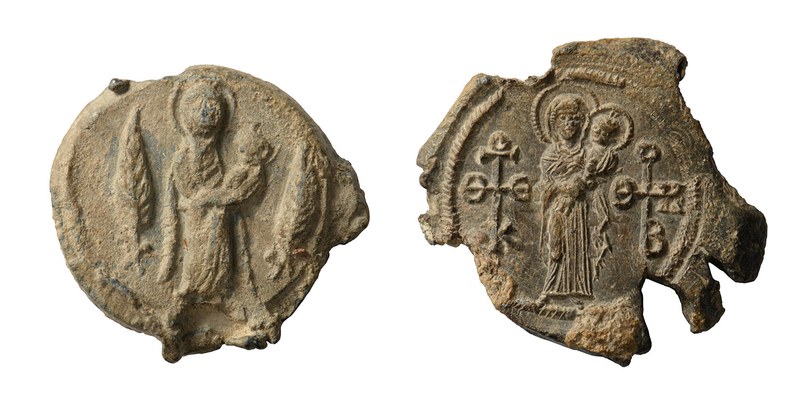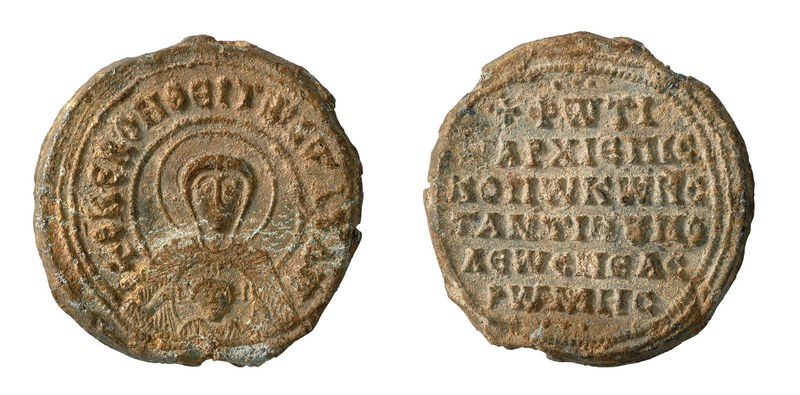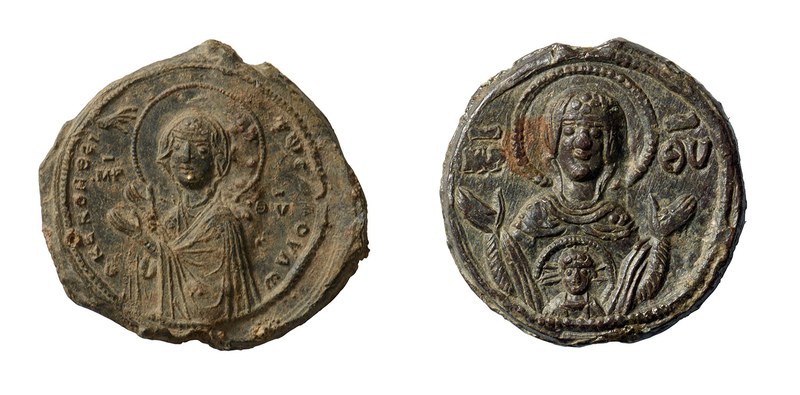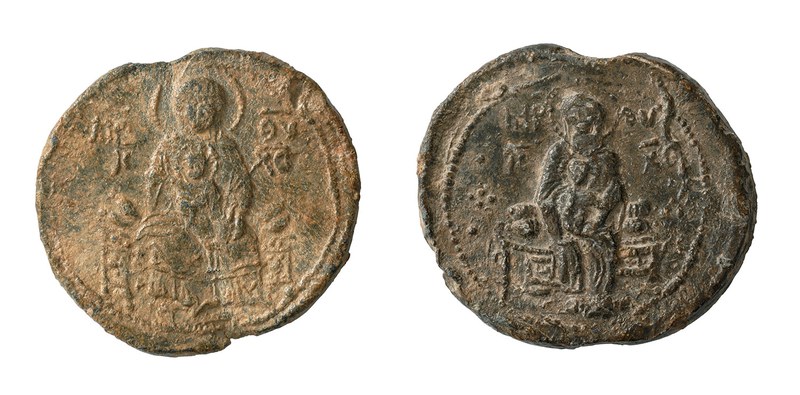The Virgin was among the first Christian figures to feature on seals. As the Mother of God, she was a powerful intercessor and the ideal guardian of both seal and seal owner. Changes to her iconography over time reveal how individual Byzantines responded to official developments in devotional practices and theological debates. Her image across the centuries also mirrors the evolution of Byzantine artistic styles.
From the fifth to seventh century the Virgin accounts for over half of all figural images on seals. Unlike the saints, the Virgin is rarely labeled; the presence of Christ sufficed to identify her image. By the early eighth century, images of the Virgin were flanked by monograms invoking her as the Theotokos (God-bearer), emphasizing her role as the principal intercessor for humanity.

The image of the Virgin disappeared from seals during Iconoclasm and was replaced by cross-shaped monograms invoking her aid. The Incarnation and the Virgin were central to the Iconophile (pro-icon) argument that the divine could be represented in human and material form. Immediately after the first defeat of Iconoclasm in 787, the Virgin’s popularity on seals soared, accounting for up to three-quarters of all figural images.

The Virgin appears on less than a quarter of seals from the tenth century, when images of saints rose in popularity. For the first time, the Virgin’s initials as Mother of God appear on either side of her image, a fashion carried over from icons of saints at this time.
The individualistic tendencies of the eleventh century led seal owners to adopt a variety of depictions of the Virgin and accompanying epithets. Two images associated with the shrine at Blachernai in Constantinople, the Virgin orans and the Virgin holding a Medallion of Christ, merged into a new type that became popular for over a century.

In the twelfth century it became increasingly common to depict the Virgin enthroned, a mark of her exalted status in devotional practices. By the thirteenth century the Virgin was again the predominant figural design on seals as imagery became confined to a more limited number of holy figures than in earlier centuries.

Image Sources
- Seal of Isidore (fifth century). BZS.1958.106.750
- Seal of Basil hypatos and imperial notarios (eighth century, early). BZS.1958.106.4903
- Seal of Photios, patriarch of Constantinople (858–867; 877–886). BZS.1947.2.2
- Seal of Romanos patrikios, anthypatos, judge of the Velum and logothetes of the stratiotikon (eleventh century). BZS.1958.106.2040
- Seal of Giagoupes (twelfth century). BZS.1955.1.2709
- Seal of Anthony IV, patriarch of Constantinople (1389–1390; 1391–1397). BZS.1958.106.312
- Seal of Matthew I, patriarch of Constantinople (1397–1402; 1403–1410). BZS.1958.106.316